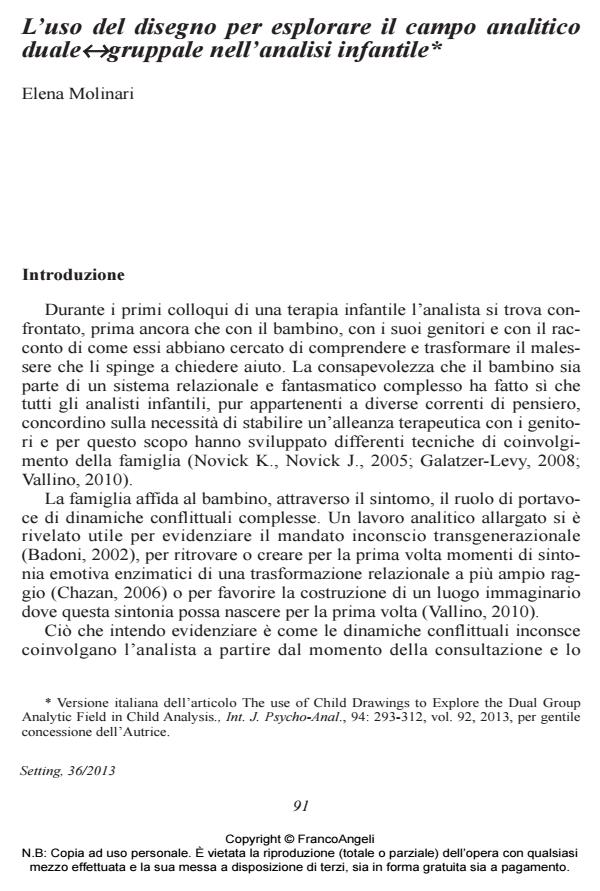L’uso del disegno per esplorare il campo analitico duale´gruppale nell’analisi infantile
Journal title SETTING
Author/s Elena Molinari
Publishing Year 2015 Issue 2013/36
Language Italian Pages 23 P. 91-113 File size 324 KB
DOI 10.3280/SET2013-036003
DOI is like a bar code for intellectual property: to have more infomation
click here
Below, you can see the article first page
If you want to buy this article in PDF format, you can do it, following the instructions to buy download credits

FrancoAngeli is member of Publishers International Linking Association, Inc (PILA), a not-for-profit association which run the CrossRef service enabling links to and from online scholarly content.
Awareness that the child is part of a complex relational system has ensured that all child analysts agree on the necessity of establishing a therapeutic alliance with the parents. Unconscious conflictual dynamics involve the child analyst and include him, from the time of the initial consultation, in an analytic field that is closer to that of a group than to the bi-personal set-up of therapy with adults. Through a clinical example, the author hypothesizes that the child’s drawings and play can be viewed as tools capable of mapping the unconscious emotions present in an analytic field that extends beyond the analyst-child couple. Play and drawings can be used in the relationship with the parents not in an explanatory sense, but as a probe with which to explore the universe of unconscious emotions present in the group field. The images or the story of the play used with this particular modality prove to be an attractive pathway that is effective in facilitating the alpha function of each of the members of the group. Furthermore, in this sense, they create the conditions for an occasion through which the parents can become more aware of their own unconscious emotions that have been entrusted to the child and expressed through his symptomatology. The possibility for the little group of subjects involved in a child analysis for oscillation in a dual-group field permits not only a shared experience of knowledge, but also a shared creativity aimed at knowledge of emotional truth.
Elena Molinari, L’uso del disegno per esplorare il campo analitico duale´gruppale nell’analisi infantile in "SETTING" 36/2013, pp 91-113, DOI: 10.3280/SET2013-036003